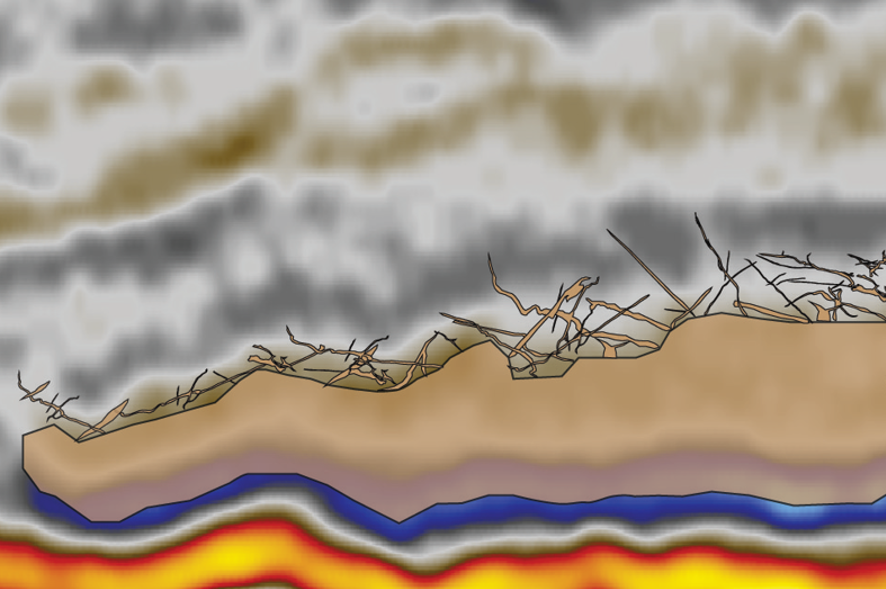Is it possible to get a better understanding of the presence of small-scale injected sands even when they are below seismic resolution individually? That’s what Alma Dzozlic Bradaric from the University of Bergen and co-authors investigated and published in a paper now available through the Journal of the Geological Society.
The researchers used the well-known Grane field in the Norwegian North Sea as a case study. Whilst the main reservoir of Grane is a thick Paleocene Heimdal sandstone deposited under deep marine conditions, from the top of this massive sandstone unit radiates a complex of mostly thin (< 7 m) sand injectites.
Although low amplitudes and irregularities above the main Grane reservoir are believed to reveal the presence of injectites, the sub-seismic thicknesses do not permit individual mapping. Yet, it is important to have an as detailed understanding of the distribution and density of the injectite network, as it not only determines the ultimate volume of hydrocarbon in the field, but also presents drilling and well placement challenges.

Unstable mudstones
As the Grane field sealing mudstones of the Lista Formation tend to be unstable, relatively high mud weights are required to prevent borehole collapse. However, when encountering a thin sand injectite, this can lead to mud losses and potentially a blow-out. Therefore, most wells are being placed such that the chance of encountering sand injectites is minimal, thereby potentially losing out on additional pay.
In order to gain a better understanding on the seismic response of a complex network of sand injectites, Alma and co-authors created a series of synthetic seismic images. To constrain the model building they used analogue data from well-studied small scale injectites in the Panoche Hills in California, USA.

The results show that even when individual injectite bodies are below resolution, especially in areas with a higher density of injectites the seismic data immediately above the reservoir tends to show a more chaotic reflection pattern, as well as a decrease in amplitude of the top reservoir. The researchers also showed that the steeper the dip of the injected sands (> 30 degrees), the more likely it is for them to be identified.
Missed pay
An additional interesting inference the geoscientists could make is the notion that when only very thin (0.5 m) injectites would be present in the immediate reservoir overburden, no seismic response would be seen. Therefore, it is likely that thicker injected sands are present above the reservoir – there is a seismic response after all – which in turn increases the possibility of missed pay zones.
HENK KOMBRINK
Full reference to the paper from Alma Bradaric and co-authors: Recognition and characterization of small-scale sand injectites in seismic data: implications for reservoir development. Alma Dzozlic Bradaric, Trond Andersen, Isabelle Lecomte, Helge Løseth and Christian Haug Eide, Journal of the Geological Society, December 2021. https://doi.org/10.1144/jgs2021-041





